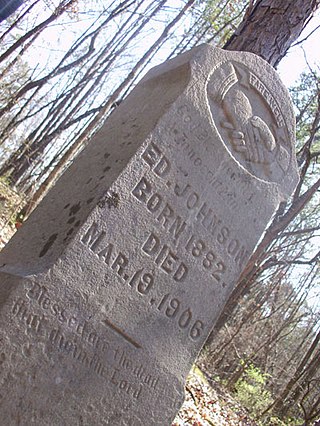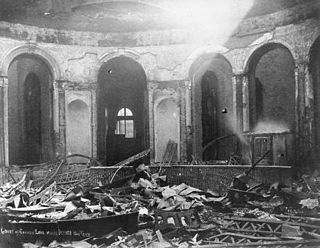Related Research Articles

Maury County is a county located in the U.S. state of Tennessee, in the Middle Tennessee region. As of the 2020 census, the population was 100,974. Its county seat is Columbia. Maury County is part of the Nashville-Davidson–Murfreesboro–Franklin, TN metropolitan statistical area.

Columbia is a city in and the county seat of Maury County, Tennessee. The population was 41,690 as of the 2020 United States census. Columbia is included in the Nashville metropolitan area.
Mack Charles Parker was an African-American victim of lynching in the United States. He had been accused of raping a pregnant white woman in northern Pearl River County, Mississippi. Three days before he was to stand trial, Parker was kidnapped from his jail cell in the Pearl River County Courthouse by a mob, beaten and shot. His body was found in the Pearl River, 20 miles west of Poplarville, 10 days later. Following an investigation by the Federal Bureau of Investigation, the men who killed him were released. Despite confessions, no one was ever indicted for the killing. Historian Howard Smead called the killing the "last classic lynching in America."
Roy Belton was a 19-year-old white man arrested in Tulsa, Oklahoma with a female accomplice for the August 21, 1920 hijacking and shooting of a white man, local taxi driver Homer Nida. He was taken from the county jail by a group of armed men, after a confrontation with the sheriff, and taken to an isolated area where he was lynched.
James Cordie Cheek was a 17-year-old African-American youth who was lynched by a white mob in Maury County, Tennessee near the county seat of Columbia. After being falsely accused of raping a young white girl, Cheek was released from jail when the grand jury did not indict him, due to lack of evidence. The county magistrate and two other men from Maury County abducted Cheek from Nashville, where he was staying with relatives near Fisk University, took him back to the county, and turned him over to a lynch mob. The mob mutilated the youth and murdered him by hanging.

On March 19, 1906, Ed Johnson, a young African American man, was murdered by a lynch mob in his home town of Chattanooga, Tennessee. He had been sentenced to death for the rape of Nevada Taylor, but Justice John Marshall Harlan of the United States Supreme Court had issued a stay of execution. To prevent delay or avoidance of execution, a mob broke into the jail where Johnson was held, and abducted and lynched him from the Walnut Street Bridge.

The Cincinnati riots of 1884, also known as the Cincinnati Courthouse riots, were caused by public outrage over the decision of a jury to return a verdict of manslaughter in what was seen as a clear case of murder. A mob in Cincinnati, Ohio, United States, attempted to find and lynch the perpetrator. In the violence that followed over the next few days, more than 50 people died and the courthouse was destroyed. It was one of the most destructive riots in American history.
Claude Neal was a 23-year-old African-American farmhand who was arrested in Jackson County, Florida, on October 19, 1934, for allegedly raping and killing Lola Cannady, a 19-year-old white woman missing since the preceding night. Circumstantial evidence was collected against him, but nothing directly linked him to the crime. When the news got out about his arrest, white lynch mobs began to form. In order to keep Neal safe, County Sheriff Flake Chambliss moved him between multiple jails, including the county jail at Brewton, Alabama, 100 miles (160 km) away. But a lynch mob of about 100 white men from Jackson County heard where he was, and brought him back to Jackson County.
Raymond Arthur Byrd was an African-American farmhand who was lynched by a mob in Wythe County, Virginia on August 15, 1926.
George Armwood was an African American who was lynched in Princess Anne, Maryland, on October 18, 1933. His murder was the last recorded lynching in Maryland.
On February 9, 1893, Alfred Blount, an African American and a Chattanooga native, was taken from his jail cell in the county jail and brutally beaten, stabbed, and hanged from the Walnut Street Bridge in Chattanooga, Tennessee. Blount was charged with assault of a woman by the name of Mrs. M. A. Moore. Moore, 51 and widowed, claimed she was cleaning her house when a man entered through her back door requesting food. Moore, assuming it was a neighbor of hers, invited the man in and called out to her African-American house boy Sam to bring the man some food. Upon realizing Sam's absence, Moore herself went into the kitchen to prepare food before reporting being grabbed by the arm and attacked by the man. After hitting the man with her hand, Moore fainted and laid unconscious in her house before recalling the incident to her neighbor, Mrs. DeRochement.
Ephraim Grizzard and Henry Grizzard were African-American brothers who were lynched in Middle Tennessee in April 1892 as suspects in the assaults on two white sisters. Henry Grizzard was hanged by a white mob on April 24 near the house of the young women in Goodlettsville, Tennessee.
Samuel Smith was a 15-year-old African-American youth who was lynched by a white mob, hanged and shot in Nolensville, Tennessee, on December 15, 1924. No one was ever convicted of the lynching.
David Jones was an African-American man who was lynched in Nashville, Tennessee on March 25, 1872 after being arrested as a suspect in a killing. He was mortally wounded while in jail, shot twice in the back while resisting white mob members who came to take him out; the whites pulled him into the Public Square and hanged him from a post outside the police station, with a crowd of an estimated 2,000 in attendance. The sheriff interrupted the hanging and took Jones down. Taken back to the jail, Jones died of his injuries on April 9, 1872.

Amos Miller was a 23-year-old African-American man who was lynched from the balcony of the Williamson County Courthouse in Franklin, Tennessee, on August 10, 1888.
Jo Reed was an African American man who was lynched in Nashville, Tennessee, on April 30, 1875, where he was taken by a white mob from the county jail after being arrested for killing a police officer in a confrontation. He was hanged from a suspension bridge but, after the rope broke, Reed survived the attempted lynching, escaped via the river, and left Nashville to go West.

The lynching of Paul Reed and Will Cato occurred in Statesboro, Georgia on August 16, 1904. Five members of a white farm family, the Hodges, had been murdered and their house burned to hide the crime. Paul Reed and Will Cato, who were African-American, were tried and convicted for the murders. Despite militia having been brought in from Savannah to protect them, the two men were taken by a mob from the courthouse immediately after their trials, chained to a tree stump, and burned. In the immediate aftermath, four more African-Americans were shot, three of them dying, and others were flogged.

The lynching of Jay Lynch, age 28, took place in Lamar, Missouri, on May 28, 1919. That year had 83 lynchings in the United States. This was one of four against white men.

William Andrews was an African American laborer who was lynched by a white mob in Princess Anne, Maryland on June 9, 1897. Andrews, then 17, was tried, convicted, and hanged all in one day after being accused of assaulting Mrs. Benjamin T. Kelley.
On the night of February 26–27, 1946, a disturbance known as the Columbia Race Riot took place in Columbia, the county seat of Maury County, Tennessee. The national press, which covered it extensively, called it the first "major racial confrontation" after the Second World War. It marked a new spirit of resistance by African-American veterans and others following their participation in World War II, which they believed had earned them their full rights as citizens, despite Jim Crow laws.
References
- 1 2 3 4 5 6 "The story of the lynching site where Jason Aldean filmed a music video". The Washington Post .
- ↑ "The Law's Too Slow". Opportunity: A Journal of Negro Life . January 1928. p. 19. Retrieved May 23, 2021.
- 1 2 Minor, Robert (1946). "Henry Choate was hanged in the courthouse". Lynching and Frame-up in Tennessee. New Century. pp. 21–24.
- ↑ Steelman, John R. (1928). A Study of Mob Action in the South (PhD). University of North Carolina. p. 268.
- ↑ Ginzburg, Ralph (November 12, 1927). "Courthouse is Lynch Gallows". New York World . ISBN 9780933121188.